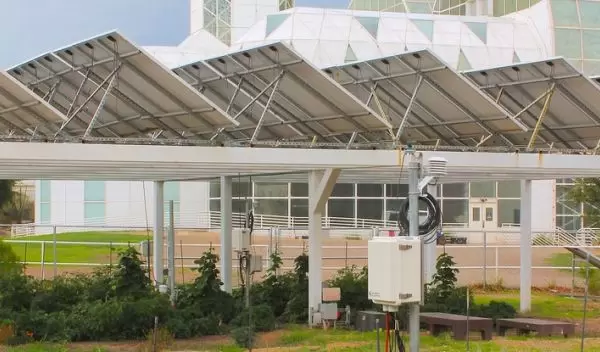
Agrivoltaics proves beneficial across food, water, energy nexus
Building resilience in renewable energy and food production is a challenge in today's changing world, especially in regions susceptible to heat and drought. Agrivoltaics, the co-locating of agriculture and solar photovoltaic panels, offers a possible solution, with new University of Arizona-led research reporting positive impacts on food production, water savings and the efficiency of electricity production.
Agrivoltaics, also known as solar sharing, is an idea that has been gaining traction in recent years. But few studies have monitored all aspects of the associated food, energy and water systems, and none have focused on dryland areas –- regions that experience food production challenges and water shortages but have an abundance of solar energy.
"Many of us want more renewable energy, but where do you put all those panels? As solar installations grow, they tend to be on the edges of cities, and this is historically where we have already been growing our food," said Greg Barron-Gafford, lead author of a paper published in the journal Nature Sustainability.
"So which land use do we prefer –- food or energy production? This challenge strikes right at the intersection of human-environment connections," said Barron-Gafford. "We started to ask, ‘Why not do both in the same place? And we have been growing crops like tomatoes, peppers, chard, kale, and herbs in the shade of solar panels ever since."
Using solar photovoltaic, or PV, panels and regional vegetables, the team created the first agrivoltaics research site at a site named Biosphere 2.
The research is funded by NSF's Division of Earth Sciences.
